
Giotto is poorly represented in museums around the world. Only “Madonna of Onisanti” is exhibited in the Uffizi Gallery in Florence. Several other museums have panels that are attributed to Giotto or are considered to have come from his workshop. The best works of Giotto came down to us in the form of frescoes.
Three temples are known, painted by the artist. Concerning the authorship of the frescoes in the church of San Francesco in Assisi, the specialists have disagreements, and the frescoes in the Florentine church of Santa Croce are badly damaged. The frescos created by Giotto in the Chapel del Arena in Padua are best preserved. They give a fairly complete picture of the work of the great artist.
The chapel got its name from the location – where it now stands, there used to be an ancient amphitheater. In 1300, this piece of land was bought by the rich inhabitant of Padua Enrico Scrovegni and built on it a luxurious house with a nearby church on the south side. The house did not live to our times; the church is preserved.
The north side of the chapel seemed to have been specially created for the murals. And the whole chapel is designed with this “intention” – its interior is simple, there are no cornices, no columns, no ribs. Outside, the church is just as simple. In fact, it is a stone box for storing frescoes.
The author of the project is not known to us, but the opinion was expressed that Giotto himself could have applied to this. The exact date of the construction of the church is unknown. Approximately: the beginning of construction dates back to 1303 year. In 1305 the chapel was consecrated. The built church was dedicated to Mary the Merciful. Enrico Scrovegni said that he built it in honor of the Virgin Mary and Padua – in the hope of saving his soul and the souls of his ancestors. There were reasons for this – Enrico’s father, Reggio Naldo, was so fierce a pawnbroker that the priests did not allow him to bury his body in the church fence. About this man narrates in his “Divine Comedy” Dante, showing his soul staying first in hell, and then, through the efforts of Enrico, moved to Purgatory.
The main part of the cycle created by Giotto consists of 34 scenes written in three tiers on the north and south wall of the chapel. In the top row are scenes from the life of the Virgin Mary and her parents, the saints Joachim and Anna. The middle row is occupied by frescoes dedicated to the life of Christ. The third row of frescoes tells about the Passion of the Lord and His resurrection.
Below these main scenes are written 14 allegorical images of virtues and vices. Curiously – they are located as if “looking” at each other. Above the front door, pierced in the western wall, is placed a large scene of the Last Judgment. At the base of this fresco, Giotto portrayed Enrico Scrovegni, holding out a reduced in scale Chapel to the Virgin Mary.
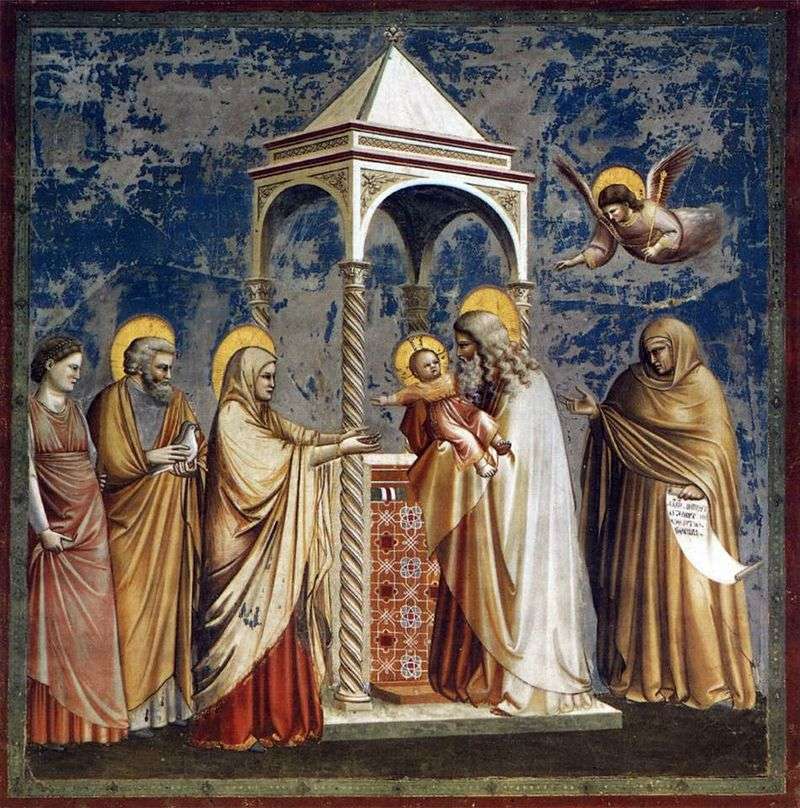 The Presentation of the Lord by Giotto
The Presentation of the Lord by Giotto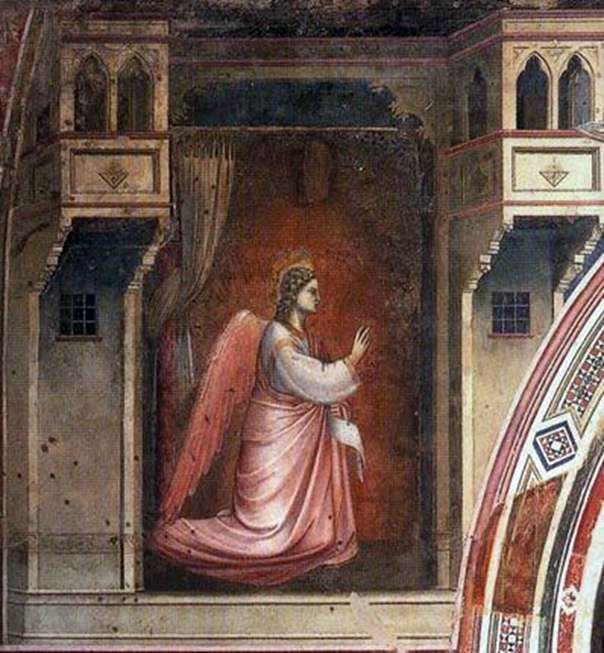 La figure de l’archange Gabriel de la fresque “Annonciation” – Giotto
La figure de l’archange Gabriel de la fresque “Annonciation” – Giotto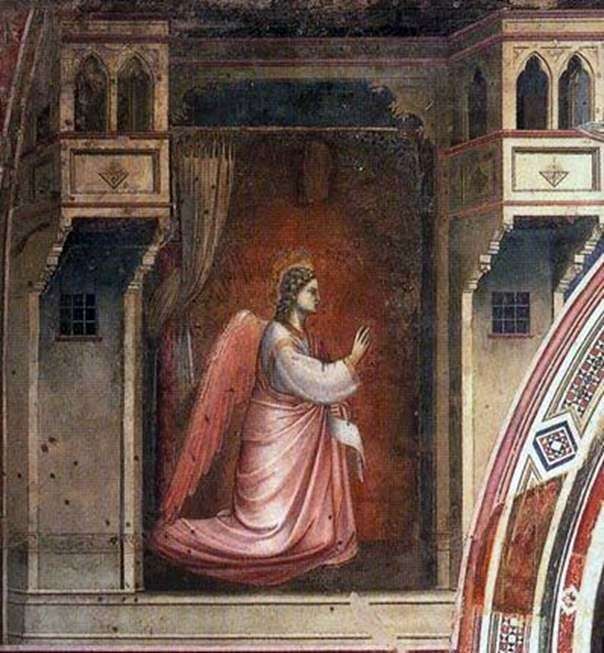 La figura del Arcángel Gabriel con el fresco “Anunciación” – Giotto
La figura del Arcángel Gabriel con el fresco “Anunciación” – Giotto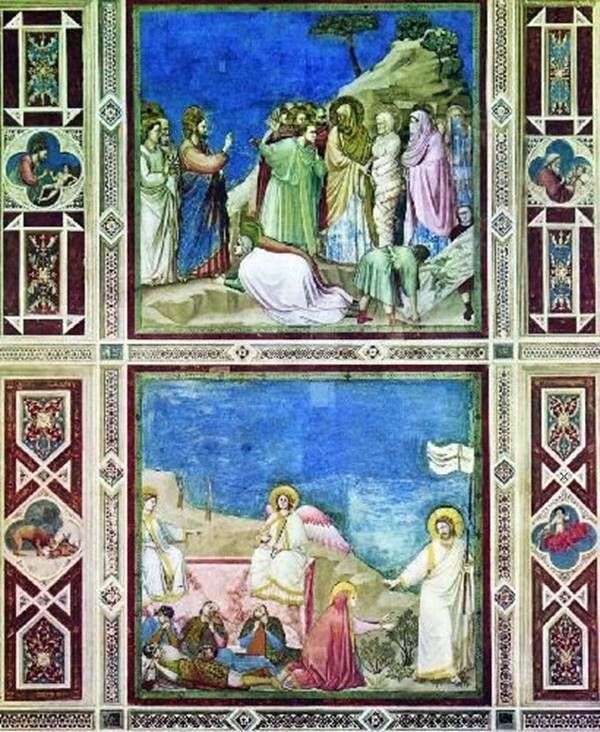 Paintings of the Capella del Arena by Giotto di Bondone
Paintings of the Capella del Arena by Giotto di Bondone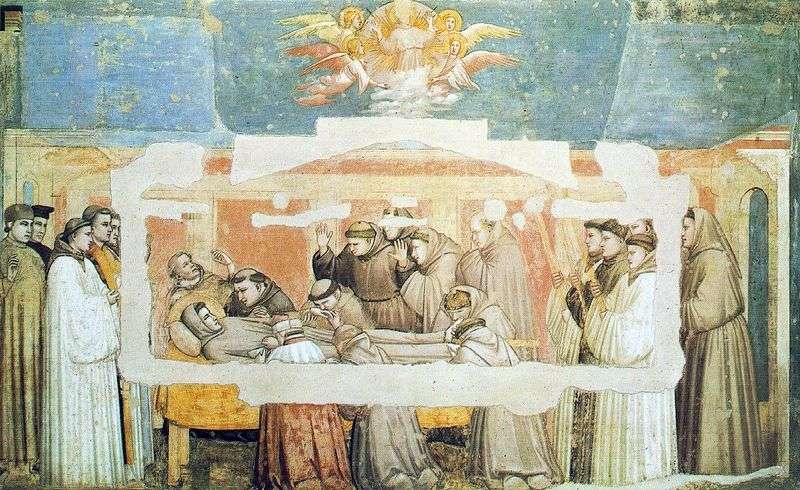 The death of St. Francis by Giotto
The death of St. Francis by Giotto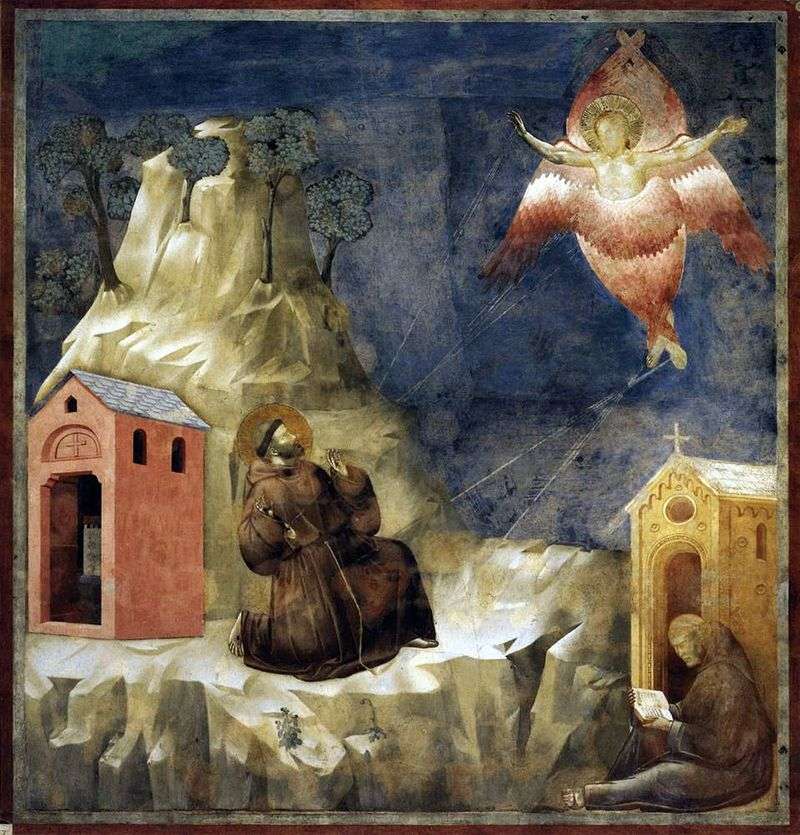 Stigmatization of St. Francis by Giotto
Stigmatization of St. Francis by Giotto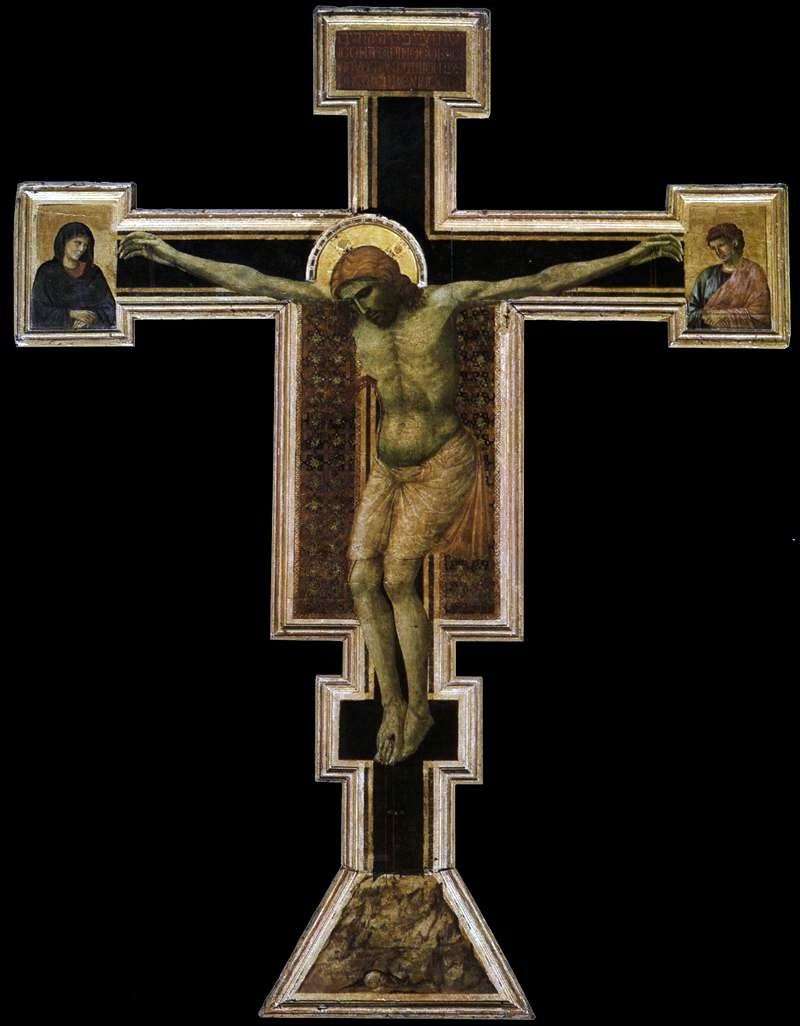 Crucifixion by Giotto
Crucifixion by Giotto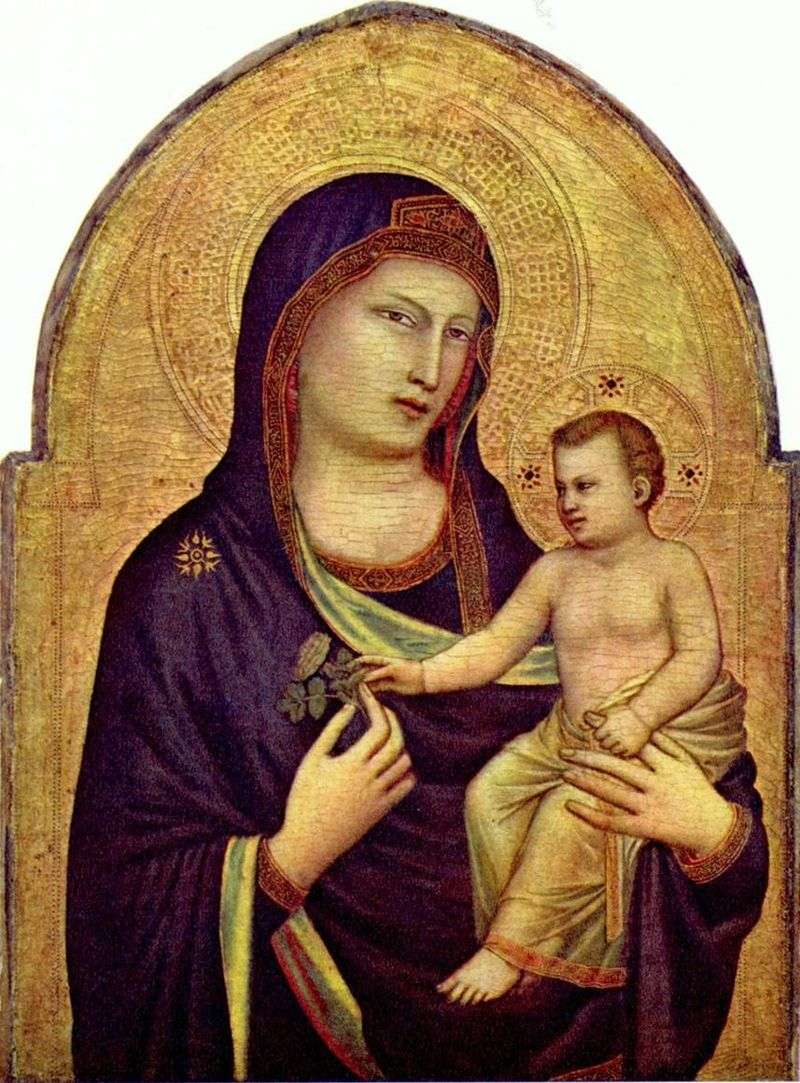 Madonna and Child by Bondone Giotto
Madonna and Child by Bondone Giotto